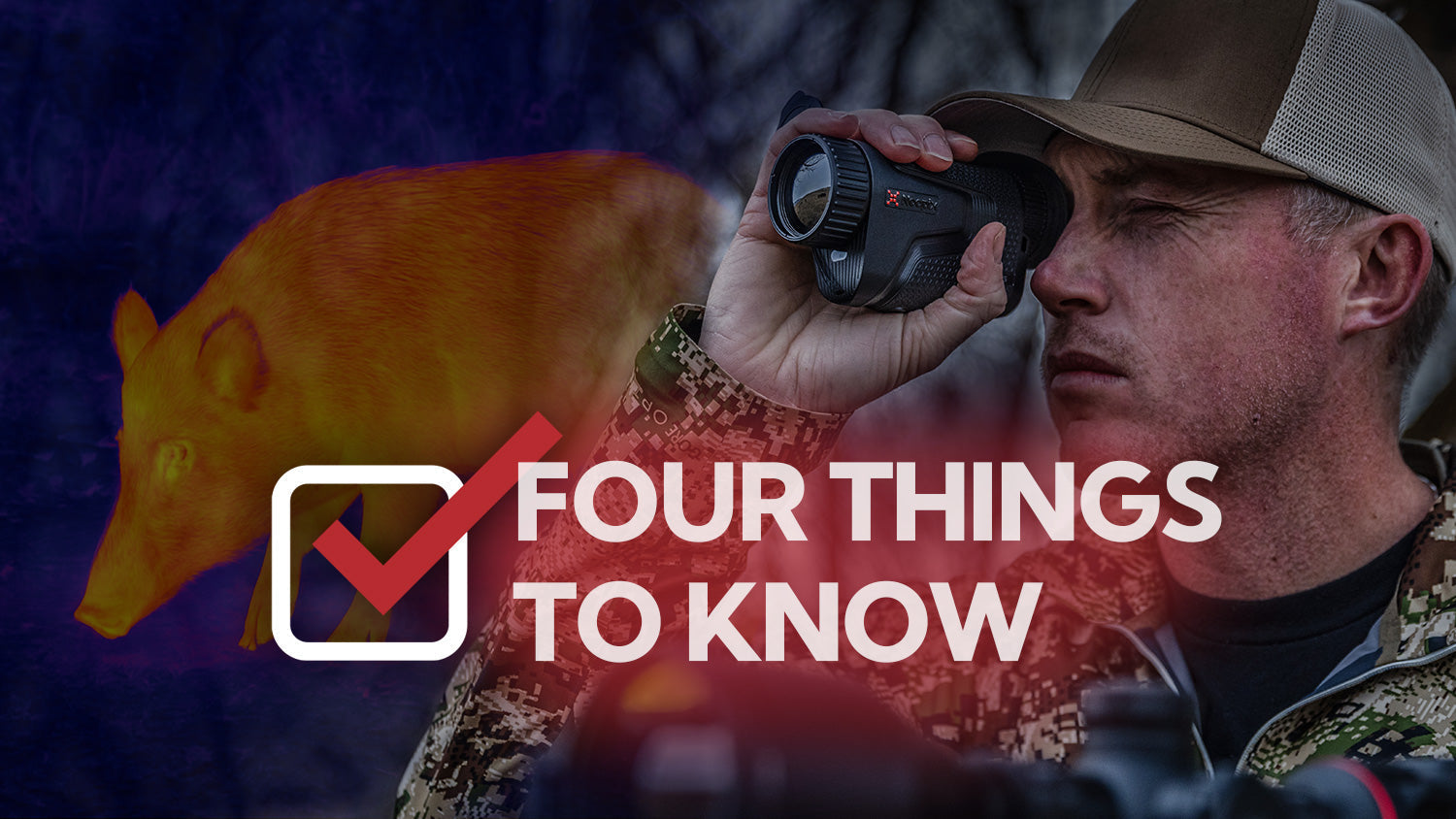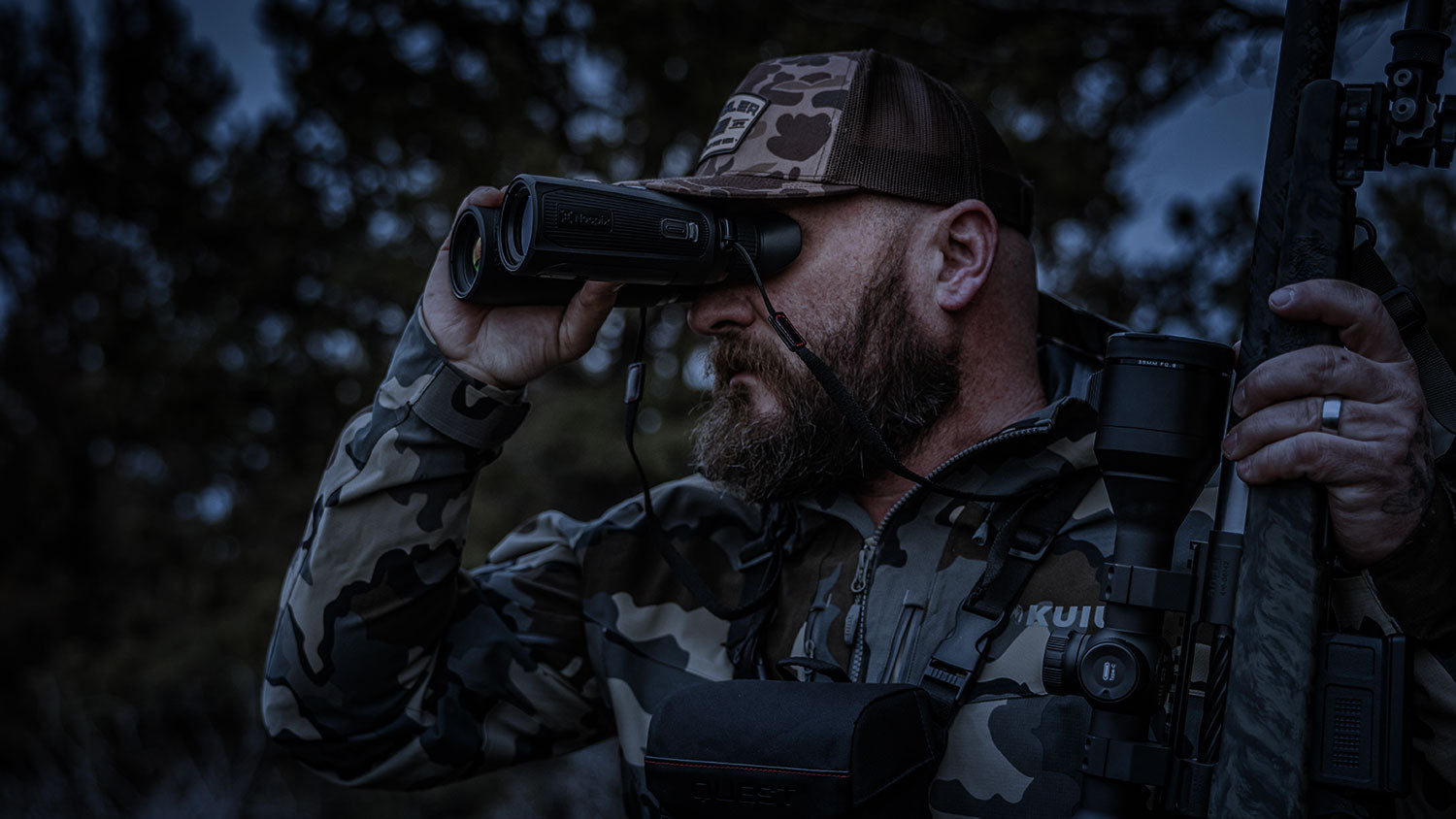Thermal optics are one of the most exciting tools to hit the hunting world in recent decades—but with that excitement comes a fast-moving, ever-changing market. If you’re considering your first thermal purchase, here are four key things to understand before you pull the trigger. Getting these right will help you avoid buyer’s remorse and make the most of your investment.
1. The Tech Evolves Quickly
Thermal imaging technology changes faster than just about anything else in the hunting world—faster than rifles, scopes, or even ammo trends. What’s top-of-the-line today might be considered mid-range in two years. That doesn’t mean you should sit on the sidelines and wait for the next big thing. In fact, if you’re always waiting for the “next” model, you’ll never enjoy the benefits of owning one now.
The best approach? Buy the thermal that fits your current needs and budget. As your use case evolves—or better tech becomes available—you can always trade up. Many dealers even offer trade-in programs to help hunters upgrade as the market progresses. Treat it like you would a truck or a bow: get what fits your needs today, then adapt later.

2. Learn the Language
You don’t have to be an engineer to shop smart—but knowing a few key terms will go a long way in helping you pick the right thermal.
Here are a few specifications worth understanding:
- Thermal Resolution: Higher resolutions like 640×512 or even 1280×1024 offer clearer images, especially at distance, while lower resolutions (like 256 or 384) may be more budget-friendly but come with tradeoffs in image clarity. (Make sure you are looking at the thermal sensor resolution, not the display size!)
- Objective Lens Size: Affects both magnification and field of view. Larger lenses generally give you more magnification, but can also be heavy and bulky.
- Base (Native) Magnification: This is the optical zoom without digital enhancements. Important for understanding your true image size and detail level.
- NETD (Thermal Sensitivity): Measured in millikelvins (mK), this tells you how well the sensor can detect subtle temperature differences. Lower numbers (like ≤40mK) mean better performance.
- Battery System: Swappable 18650 batteries? Proprietary rechargeables? Know what you’re getting and how long it will run.
Instead of getting overwhelmed by spec sheets, make a list:
- A few “must-have” features
- Some “nice-to-haves”
- And any deal-breakers
A good dealer can help you filter options based on this list, and knowing the basics will make those conversations far more productive.
3. Don’t Overlook the Handheld!
Many new thermal buyers focus entirely on weapon sights—but handheld thermal scanners are just as important, if not more. In fact, serious hog and predator hunters often spend far more time glassing with a handheld than looking through their scope.
Why? A handheld helps you:
- Scan quickly and quietly without shouldering your rifle
- Conserve energy by glassing more efficiently
- Maintain a wide field of view when spotting animals at closer range
- Be safe! Don't point a rifle at something before you know what it is.
If your budget allows, consider spreading it across a thermal weapon sight and a handheld scanner. You don’t need every bell and whistle on both—balance features between the two. A high-end handheld and a mid-range scope may serve you better than putting your entire budget into a top-tier scope alone.
4. Legal Use and Responsibility
Before you buy, it’s critical to understand the legal landscape around thermal optics. These devices are powerful tools—but that power comes with responsibility.
Thermal optics are almost always illegal for harvesting big game animals, and there are often restrictions on when and where they can be used. Depending on your location, laws may vary based on:
- Land type – Public vs. private
- Season or time of day (sometimes there is no rule against thermal or night vision optics, but night hunting in general may be illegal)
- Species being hunted
Just like with any other hunting method or piece of gear, it’s your responsibility to know and follow the regulations where you hunt. Don’t rely on hearsay or assume rules are consistent across different states or counties—read the current game laws before heading into the field with thermal gear.
Final Thoughts
There’s no universal “best” thermal—only what’s best for your situation. Focus on your current use case, learn the basics of what specs mean, consider a mix of handheld and weapon-mounted tools, and always stay within the law. A well-informed purchase today sets you up for success on your next night in the field.



Leave a comment
All comments are moderated before being published.
This site is protected by hCaptcha and the hCaptcha Privacy Policy and Terms of Service apply.